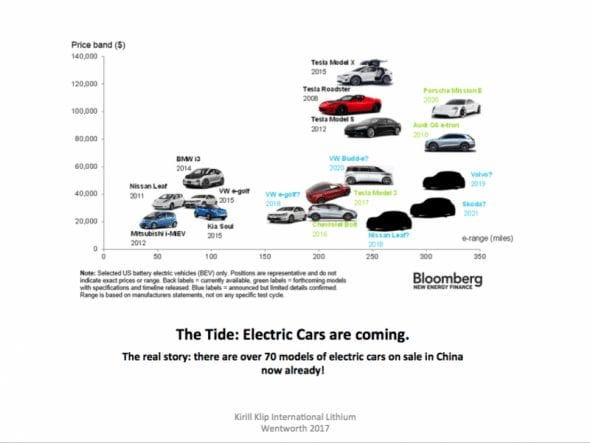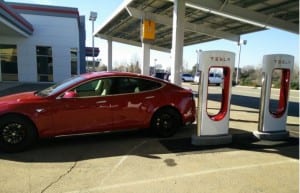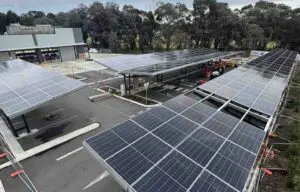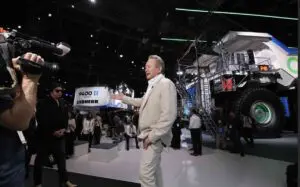As Tesla approaches production of its mass-market Model 3, an increasing array of better and cheaper electric vehicles are also being rolled out around the world by both new and traditional car makers – including a new and improved, and still pretty cheap, version of the Nissan Leaf.
This trend, which is neatly depicted in the Bloomberg chart below, suggests a turning of the tide in the long and troubled ICE cars vs electric cars story. As the CEO of International Lithium Corp, Kirill Klip, puts it, “we are talking here about the magical 20/200” when $US20,000 buys you an EV with a better performance than a BMW and a range of around 350km.
“It means that not only the cost of ownership for EV is lower than a comparable ICE car, but a beautiful electric car is cheaper and better than anything ICE (Internal Combustion Engine) can offer,” Klip said on his blog this week. “We are talking here about all cars being electric much faster than you think.”
 Is this true for Australia, though, where the slow uptake of electric vehicles has been driven by a vicious circle of lack of incentives or support infrastructure, an increasingly restricted range of available local EV models, and cost.
Is this true for Australia, though, where the slow uptake of electric vehicles has been driven by a vicious circle of lack of incentives or support infrastructure, an increasingly restricted range of available local EV models, and cost.
As Phil O’Neil, a senior associate, new energy, at Advisian, said last September, “electric vehicles will become increasingly attractive from an economic perspective,” even in Australia. But we could still be looking at “a couple of decades to change-over from full petrol to full electric, which reflects the normal turnover in the personal car fleet,” he said.
“However, the rapid adoption of car sharing and autonomous vehicles has the potential to reduce this period dramatically.”










